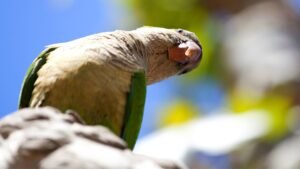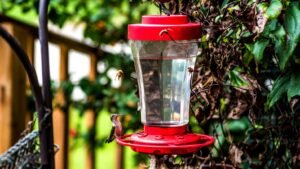If there is any bird that lives up to its name, it’s the resplendent quetzal. The Quetzal is considered one of the world’s most beautiful birds. The colors on the bird are so striking and truly resplendent. The quetzal bird is adopted as the symbol of Guatemala, known as the Guatemalan quetzal.
The quetzal was sacred to the ancient civilizations of the Maya and Aztecs. The kings of the Mayan civilizations often wore quetzal feathers on their robes during ceremonies. What’s more to know about these beautiful birds? Read on to find out.
The Species Of Quetzal
The most popular species amongst Quetzal birds is the resplendent quetzal. They are the species of quetzals that are considered a symbol of Guatemala. Let us take a look at the five species of these stunning birds.
The Resplendent Quetzal
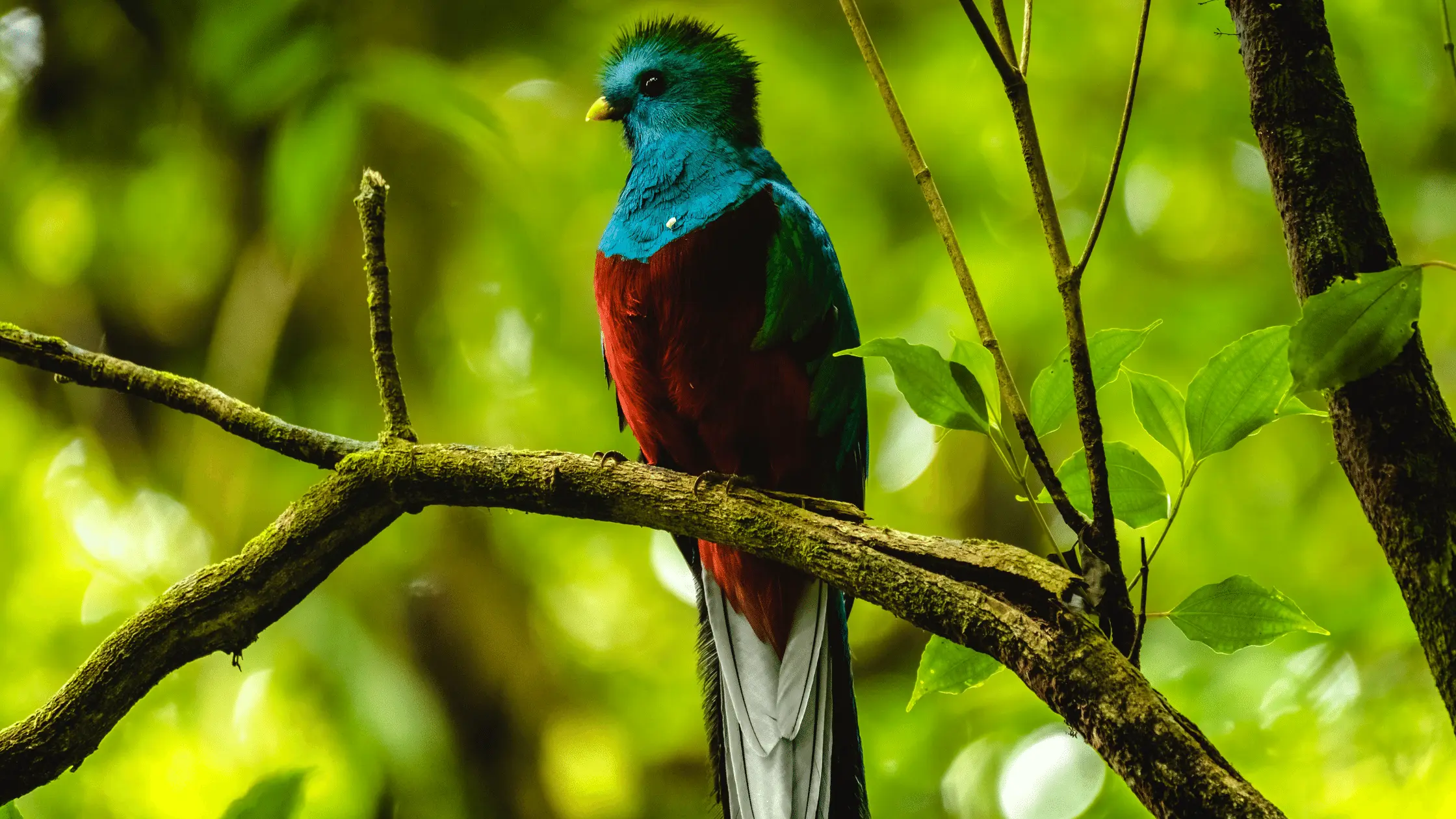
The resplendent quetzal is simply stunning. You can’t see the resplendent quetzal and not be awed at the beauty of this bird. Quetzali is an Aztec word used for the feather of the bird. The word Quetzali also means “precious.”
Unfortunately, the resplendent Quetzal bird has often been in danger of extinction. Why? The bird depends heavily on the cloud forest, which is constantly being destroyed. However, the resplendent quetzal species is gradually thriving because of the effort to maintain these cloud forests.
When they are in small pairs, the resplendent quetzal forages in fruiting trees may also snatch tiny animals before returning to their nests.
Just like songbirds, the resplendent quetzal has a smooth and beautiful call. They are also beautiful and have musical voices. When they make their call, their voice carries through the forest. When they are about to mate, the male will chase the females into the lower parts of the forest even though they prefer to live in tree canopies.
Like hummingbirds, male quetzal birds have an impressive mating display. When quetzal males want to mate, they spiral high above the canopies. When they are done spiraling, they plunge back to the female in the canopy.
One of the best traits about the resplendent quetzal is its tails. The tails are beautiful and can measure up to a meter long. The adult male’s splendid tail is gray with black stripes. The head of the adult male shimmers green. The green color also extends to the wings and back. This bright green color helps the bird blend into the forest’s wet foliage.
The females of the bird have similar plumage to their male counterparts. However, they don’t have the males’ green crest and red plumage.
White Tipped Quetzal
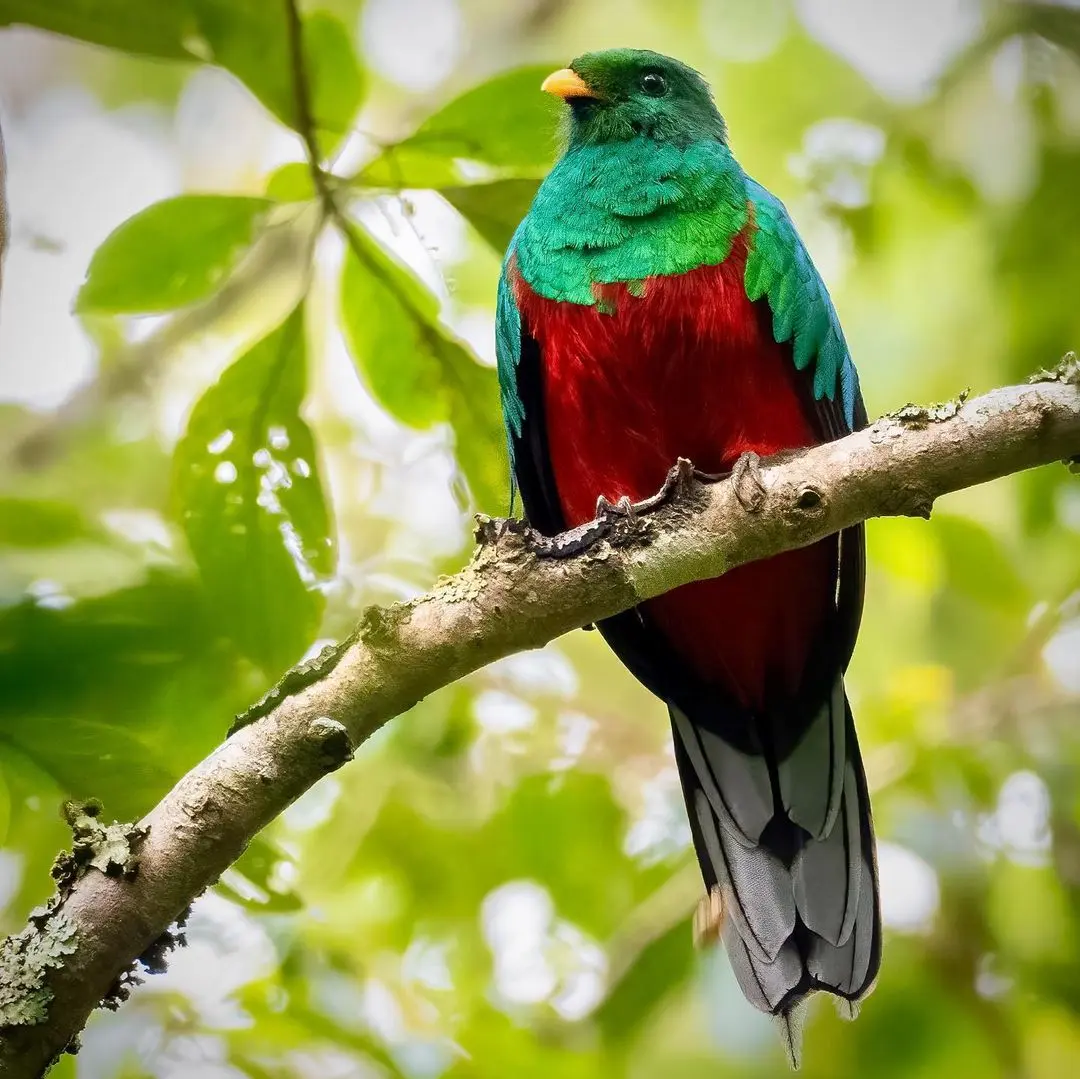
The white-tipped species is another species of the Quetzal bird. They belong to the Trogonidae family. The Trogonidae family is found in Venezuela, Guyana, and Colombia. In the white-tipped species of quetzals, there are about two subspecies. The two subspecies are, Pharomachrus fulgidus fulgidus and Pharomachrus fulgidus festatus. The Pharomachrus fulgidus fulgidus is found in the mountains of Northern Venezuela. The Pharomachrus fulgidus festatus is located in the Santa Marta mountains of North East Columbia.
Pavonine Quetzal
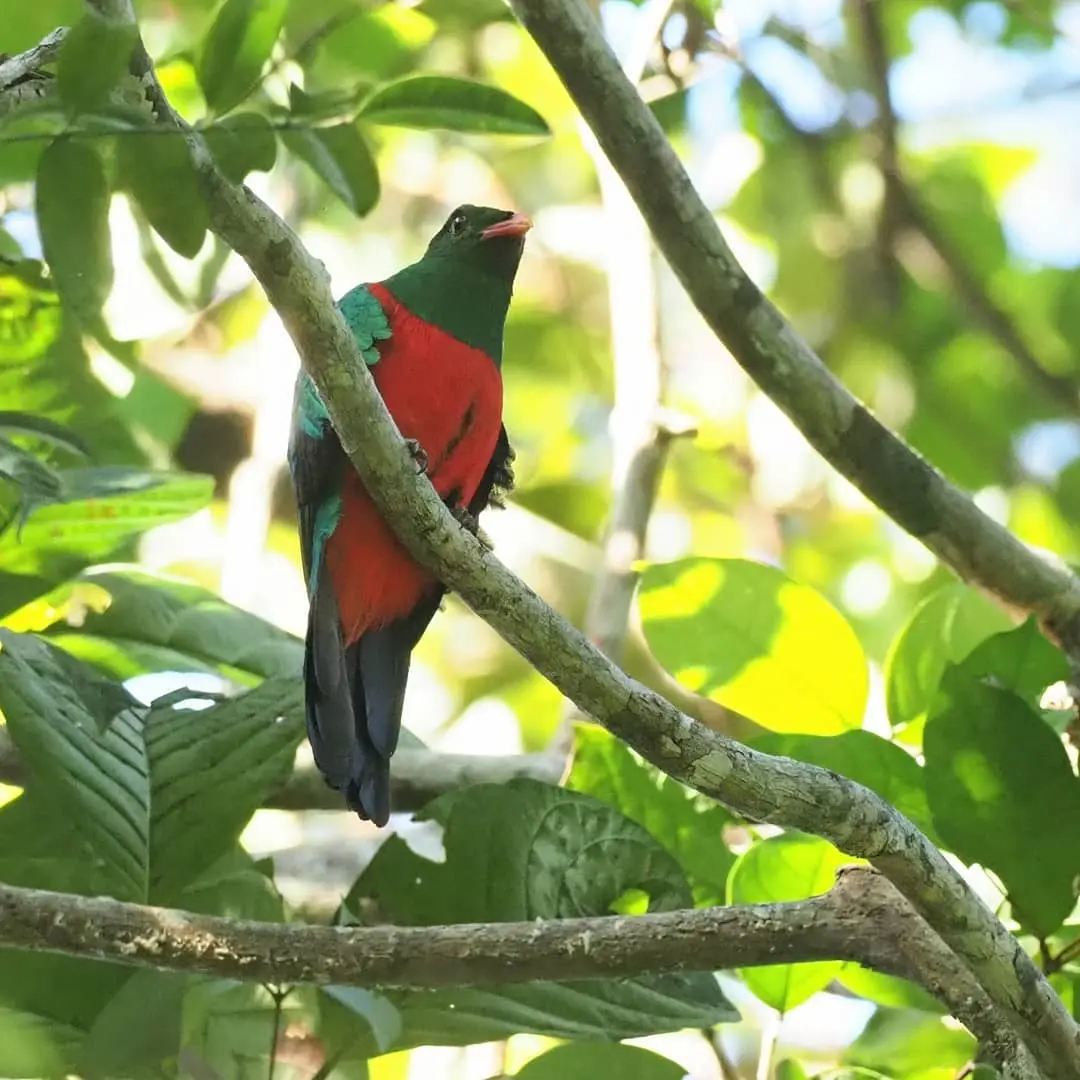
The pavonine quetzal is also known as Pharomachrus pavoninus. The males spot a luminous green color and have a bright red belly and red bill. Their underside is also black. On the other hand, the females spot a reddish gray abdomen, bright green back, and dull dusky head. Also, the bottom of the female pavonine quetzal is black. The undersides also have a faint white barring.
The Pavonine Quetzal makes their home in the Amazon basin. This is where they live all through the year. They also range across Brazil, Venezuela, Eastern Ecuador, South Eastern Columbia, and Peru. They are the only quetzal species in the lowland rainforests of South America. As mentioned earlier, they prefer to stay in the Amazon basin. However, when they are in the Amazon basin, they like to restrict their movements in the middle and lower understory of the canopies.
There is nothing much known about the behavior of pavonine quetzal. However, they are known to be frugivores, and their vocalizations are simple in form, loud, and repetitive. If you can imagine a descending whistle’s sound, you will know how the pavonine quetzal sounds.
Crested Quetzal
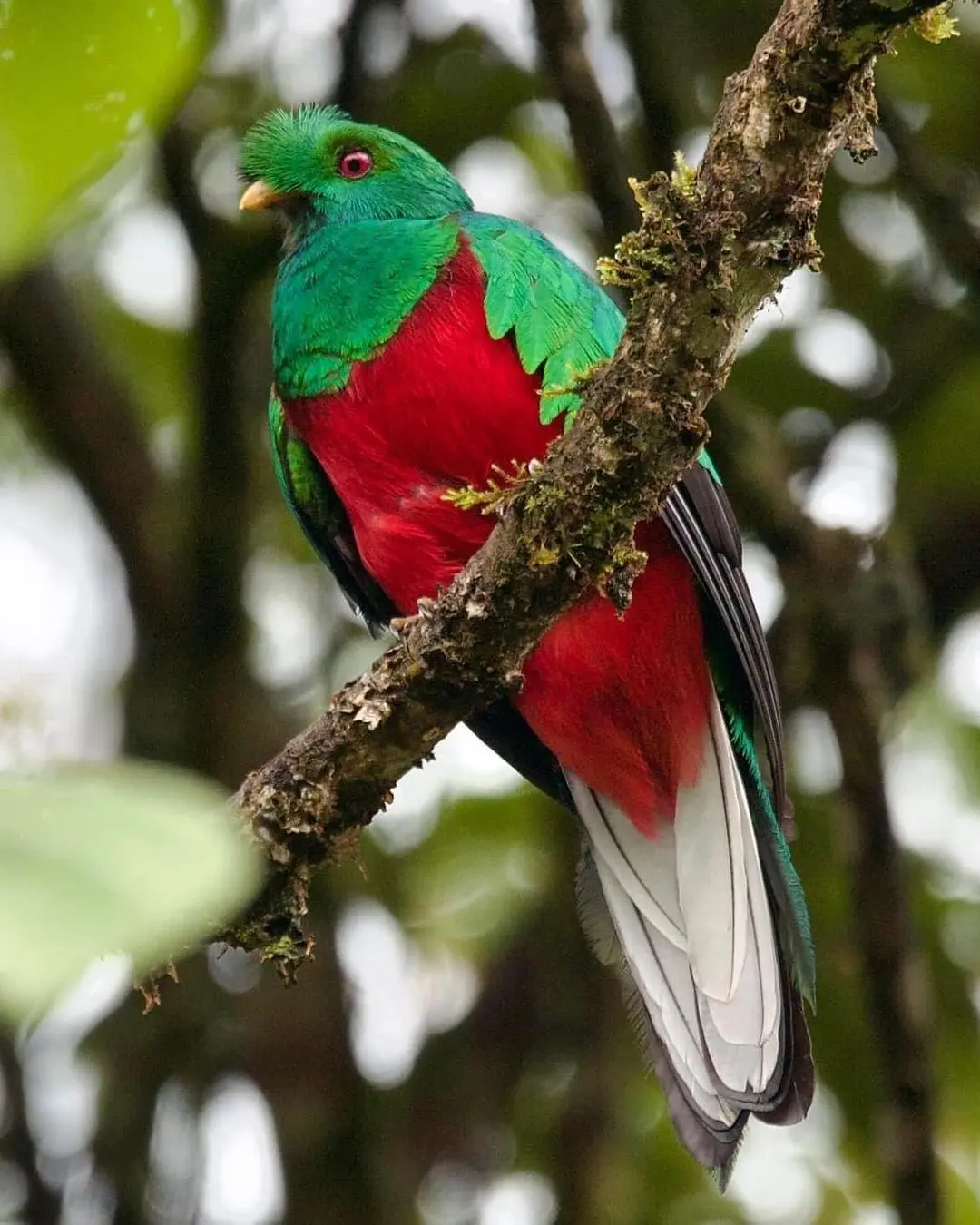
Just like other quetzals, the Crested quetzal belongs to the Trogonidae family. They are native to South America. They make their natural habitat the subtropical montane forests.
In terms of appearance, the adult males of the crested quetzal have a metallic green head and upper parts. The belly and breasts of the males are red. Male crested has a short bill that is orange in color. The females don’t have a crest. However, their heads and upper breasts are brown.
The crested quetzal is also a frugivore. Adults catch prey like arthropods and small vertebrae when they raise their young.
The golden-headed quetzal
By the name of this bird, you can guess how it gets its name. For those who still don’t know, the golden-headed quetzal gets its name because of the golden sheen on the head of the males. The males have an emerald color and a red belly. The males also spot a yellow bill.
In terms of color, the females of the golden-headed quetzal get the short end of the stick. The female has more brown color than the males. The golden-headed quetzal is known for being large with a mournful sound. Another bird that has a mournful sound is the mourning dove.
Quetzal Behavior
Now that you know the different species of the beautiful quetzal, it’s time to learn a little bit about the behavior of these birds. We will begin by talking about their habits and lifestyle. When they aren’t breeding, quetzals like to stay alone. However, they will gather in trees in large numbers when feeding. They go foraging during the mid-day hours. The adult quetzal prefers a fruit-based diet, but the chicks eat more insects than fruits.
Quetzals like to hover, much like hummingbirds. Quetzals hover and stall in a bid to select the fruits near the tips of the trees carefully. Quetzals are small birds when you compare them to birds such as vultures. However, quetzals will swallow avocado whole before they regurgitate the pits.
The resplendent quetzal can be quite loud, especially during calm, cloudy dawns. They are also loud on misty afternoons. However, when the sun is hot, resplendent quetzals are quiet. Experienced bird watchers are familiar with the sound they make, a treble syllable known as “kyow.”
What Is The Habitat Of Quetzals?
Regarding habitat, the resplendent quetzal likes to live in cloud forests. These birds live anywhere between 4 to 7000 feet in elevation. Quetzals live in moist forests. They cannot live in isolated trees, and they also don’t live in fields. Quetzals do not like forests that have been heavily deforested. Quetzals have become a driving force behind the preservation of cloud forests. Due to the efforts to protect cloud forests, the quetzal population is thriving.
Diet and Nutrition: What Do Quetzals Eat?
Quetzals are frugivores. This is because they specialize in fruit eating. But, they will occasionally get some insects into their diet and nutrition. Some of their favorite insects are wasps, ants, and larvae. They aren’t also beyond eating lizards and frogs.
Lifespan Of a Quetzal
A quetzal bird lives quite long. Unlike robins, which have a considerably short lifespan, the average lifespan of a quetzal is about 20 to 25 years.


